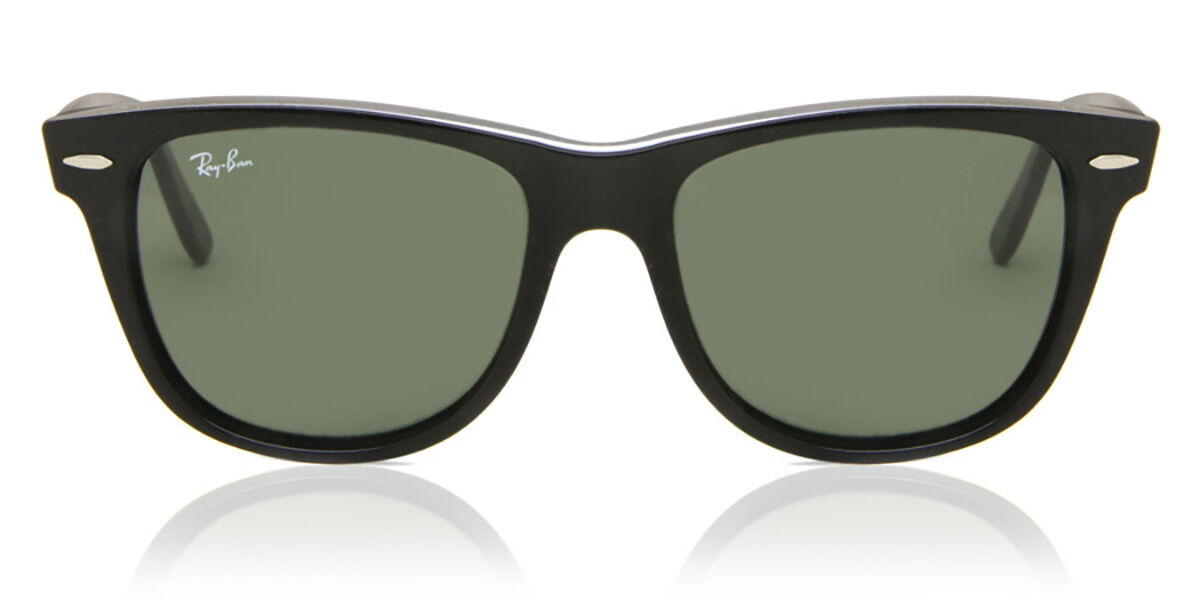What are High Index Lenses?

Reviewed by
Maria Horan FBDO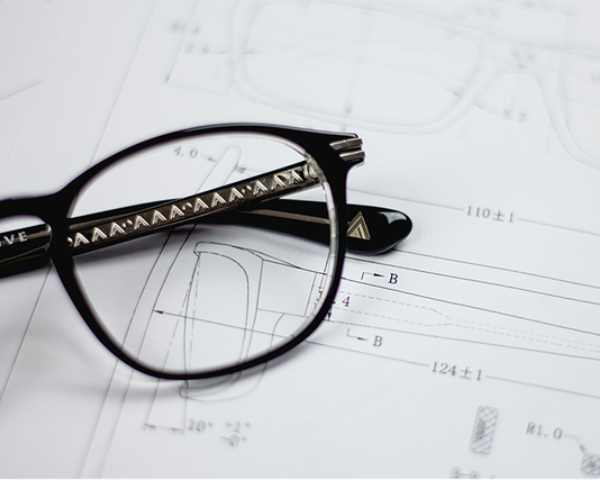
SUMMARY
High-index lenses are designed for strong prescriptions. They offer a thinner, lighter alternative to traditional lenses. Usually made from lightweight plastic, they bend light more efficiently and provide a sleek fit for most frames. Although they can be more and expensive, they improve comfort and are better suited to higher prescriptions than other materials.
The lens or refractive index measures how efficiently a lens material bends light, determining the thickness of a lens: materials with a higher index bend light more effectively, allowing lenses to be thinner while providing the same level of vision correction.
This is especially beneficial for individuals with stronger prescriptions, as high-index lenses reduce the bulkiness typically associated with traditional lenses.
Read on to learn exactly what high-index lenses are and how they compare to other lenses.
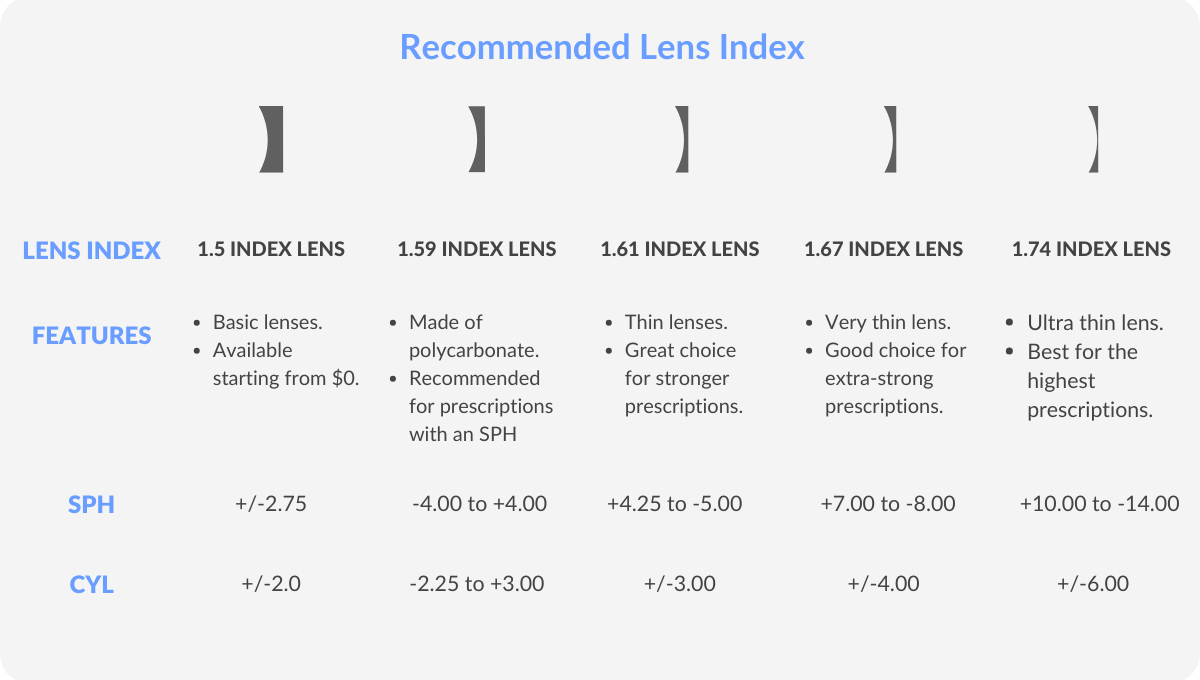
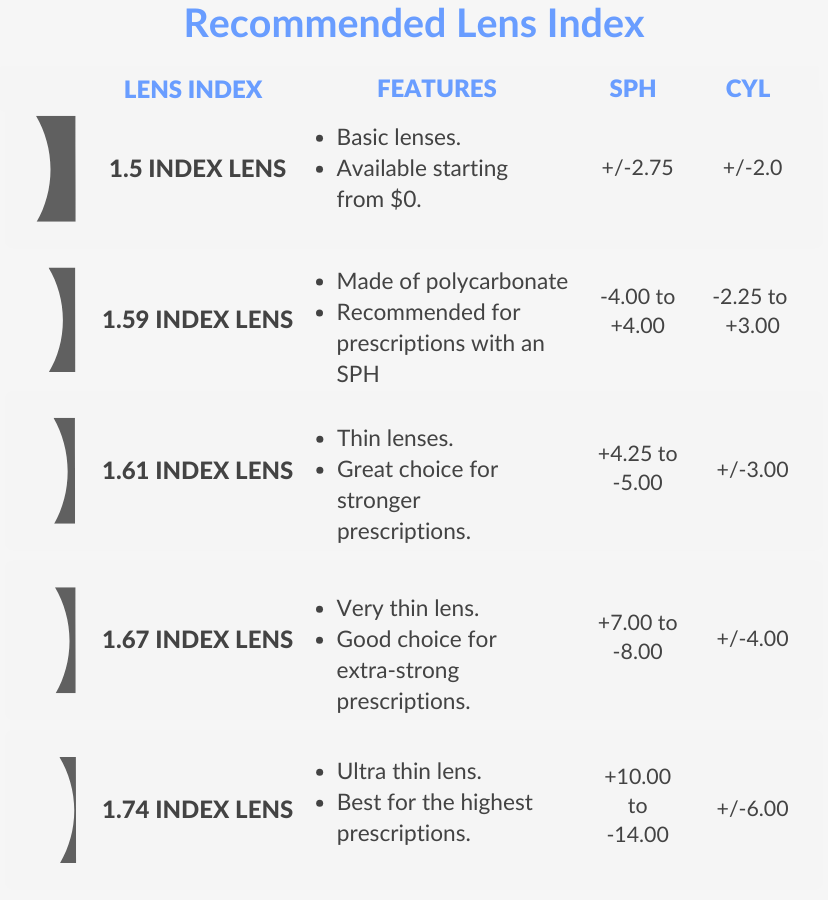
What makes high-index lenses special?
In the past, those with higher prescriptions wore thick glass or plastic lenses that were quite bulky and gave a bug-eyed look due to the thickening of the lens towards the edges or centre. However, the emergence of high-index materials changed this.
Now, strong refractive errors such as high myopia, hyperopia, presbyopia, or astigmatism can be corrected with thinner lenses that don’t compromise on efficacy.
High-index lenses are thinner, lighter and more durable. Prescription glasses equipped with high-index lenses are noticeably slimmer, lighter and more aesthetically pleasing, which is why they are recommended for people with strong eyeglass prescriptions.
Thanks to high-index lenses, strong prescription glasses can now be worn in stylish, semi-rimless and even rimless styles. Most high-index lenses are also aspheric, making them slimmer and greatly eliminating the “bug-eye” look.
DID YOU KNOW?
The first high index lenses were produced in 1983 by Mitsubishi Chemical, made from polycarbonate.
What are high-index lenses made of?
Most high-index lenses are made of a particular type of lightweight plastic that bends light more efficiently than other lens materials. Notably, Mitsubishi Chemical has patented many of these advanced materials, specially designed for their superior refractive index.
While high-index lenses made of glass also exist, they are prescribed less frequently due to their heavier weight and reduced impact resistance compared to their plastic counterparts.
Advantages of high-index lenses
High-index lenses are the solution for accommodating high prescriptions in thinner lenses. That is not all, though; here are all the advantages of choosing high-index lenses:
- Thinner and lighter than other lenses: The specific plastic blend makes it possible to create thinner and lighter lenses that provide better light refraction than regular ones.
- Versatility: High-index lenses can be customised according to your needs and preferences. They can be single vision, progressives, transitions and can be treated with many coatings such as blue light block, polarisation, anti-reflective and more.
- Comfort: Because they are lighter and thinner than other types, high-index lenses offer a higher level of comfort. With high-index lenses, your glasses will not be heavy on your ears and nose, making your life easier.
- Great fit for most frames: High-index lenses fit many different frames. Always remember that the bigger the frame, the thicker the lens, so opticians recommend smaller frames if you have a strong prescription.

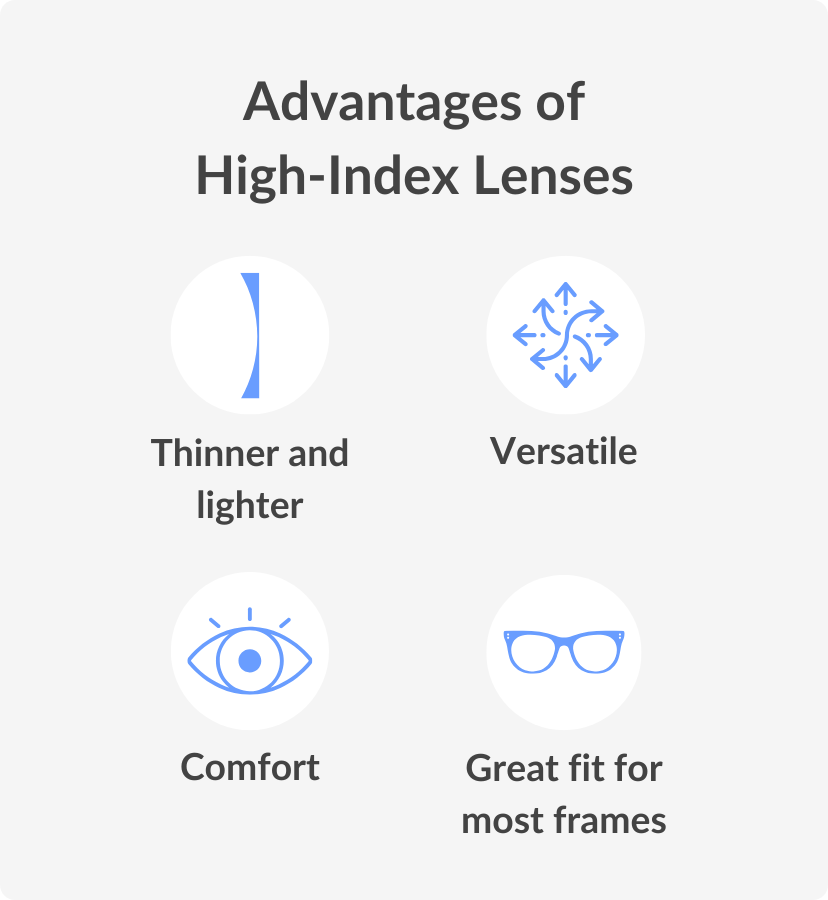
Disadvantages of high-index lenses
Although the pros outnumber the cons, here are a couple of things to consider when it comes to high-index lenses:
- More fragile than other lenses: High-index lenses are not as impact-resistant as other types of lenses. This means that they may not be the best fit for children or those doing sports.
- More expensive than other lenses: These lenses offer many benefits but are also a bit more expensive than regular lenses. For many wearers, though, their benefits outweigh the price.
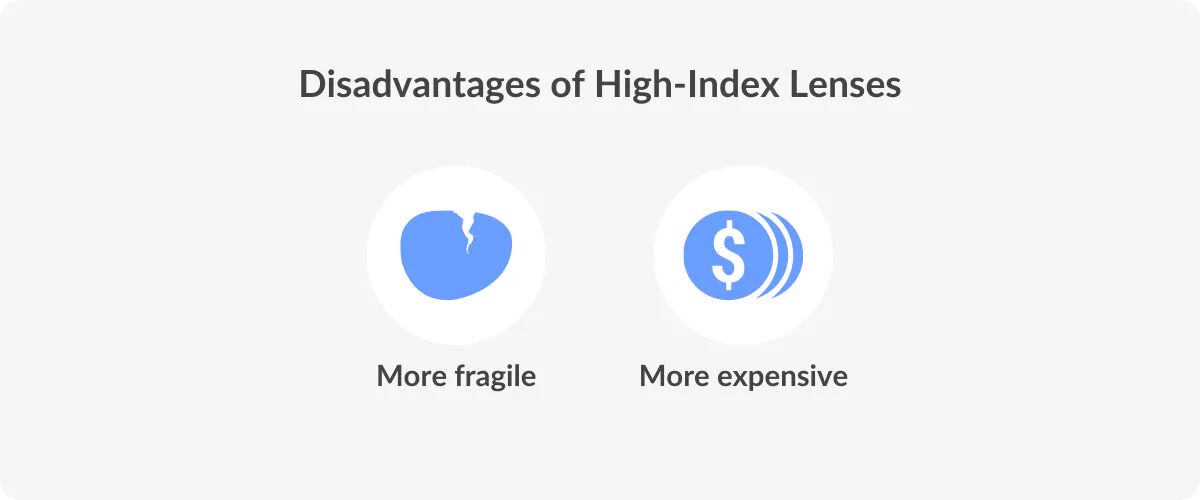
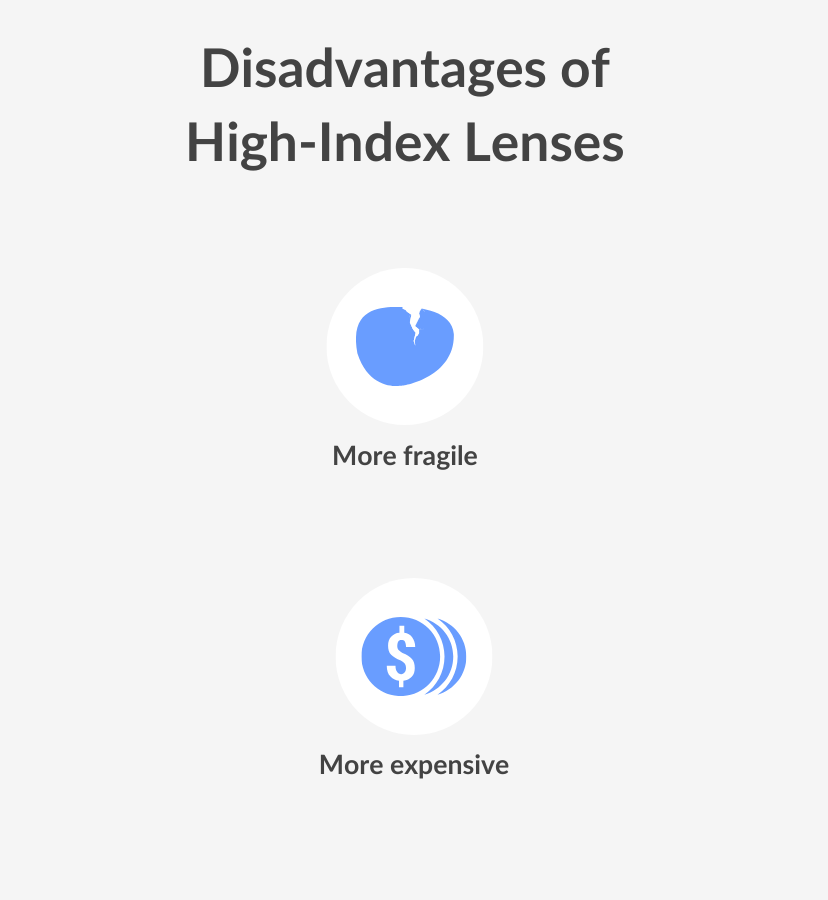
Difference between high-index and other lenses
High-index vs. regular
Both regular lenses and high-index ones bend light to correct refractive errors. The difference is that regular lenses have to be thicker to correct strong prescriptions, while high-index lenses are made of a material that bends light more efficiently. This allows the lenses to be lighter and thinner.
In general, the stronger the prescription, the higher the index should be for the glasses to offer comfortable vision and fit. For example, a regular lens with a 1.50 index and a 1.67 high index lens can have the same prescription, but the high index lens would be around 30% thinner.
High-index lenses vs. polycarbonate
Polycarbonate lenses have a 1.59 index, making them thinner than standard lenses but not as thin as high-index lenses.
They are, however, more impact-resistant than high-index lenses, offering increased durability. This is why polycarbonate lenses are recommended for children’s glasses, sports eyewear and safety goggles, even though they don’t provide the same visual clarity as other plastic lenses.
1.67 vs. 1.74 high-index lenses
Both 1.67 and 1.74 high-index lenses can accommodate strong prescriptions. The difference is in the thickness. 1.74 high-index lenses are up to 10% thinner than 1.67 high-index lenses.
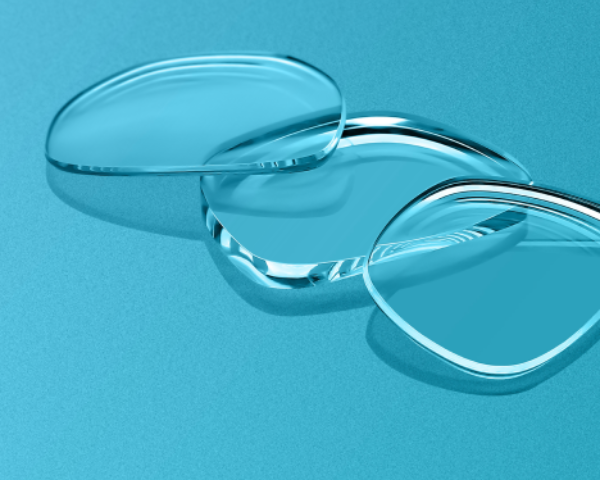
For reference, 1.67 high-index lenses are recommended for prescriptions with an SPH correction between +/-7.00 and +/-9.00 and a CYL correction between +/-3.25 and +/-4.00.
1.74 high index lenses are instead known for being “as thin as possible” and recommended for even stronger prescriptions, namely those with an SPH correction of +/-9.25 and above and a CYL correction between +/-4.25 and +/-6.00.
Are high-index lenses right for me?
Whether high-index lenses are right for you depends on your prescription, lifestyle and personal preference. These lenses are ideal for those with strong prescriptions who want thinner, lighter and more aesthetically pleasing eyewear. Their versatility and ability to fit a variety of frame styles make them a top choice for many.
However, it’s essential to weigh the pros and cons. While high-index lenses offer comfort and style, they may be less impact-resistant and more expensive than standard options. If you lead an active lifestyle or need durable lenses for sports or heavy-duty use, other materials like polycarbonate might be more suitable.
Consider your unique needs and consult with your optician to determine whether high-index lenses align with your vision requirements and daily activities. And if you need any additional clarifications, feel free to reach out to our opticians–they’re here to help.
Related articles



Related articles








































